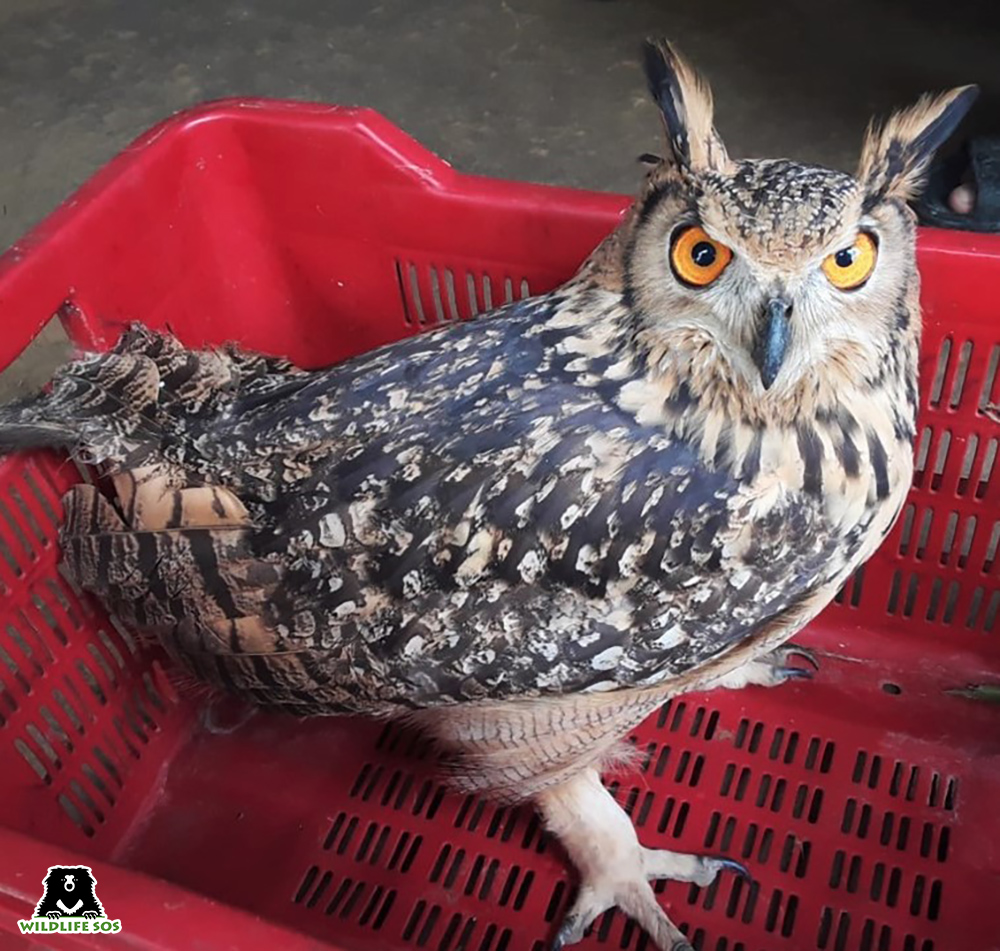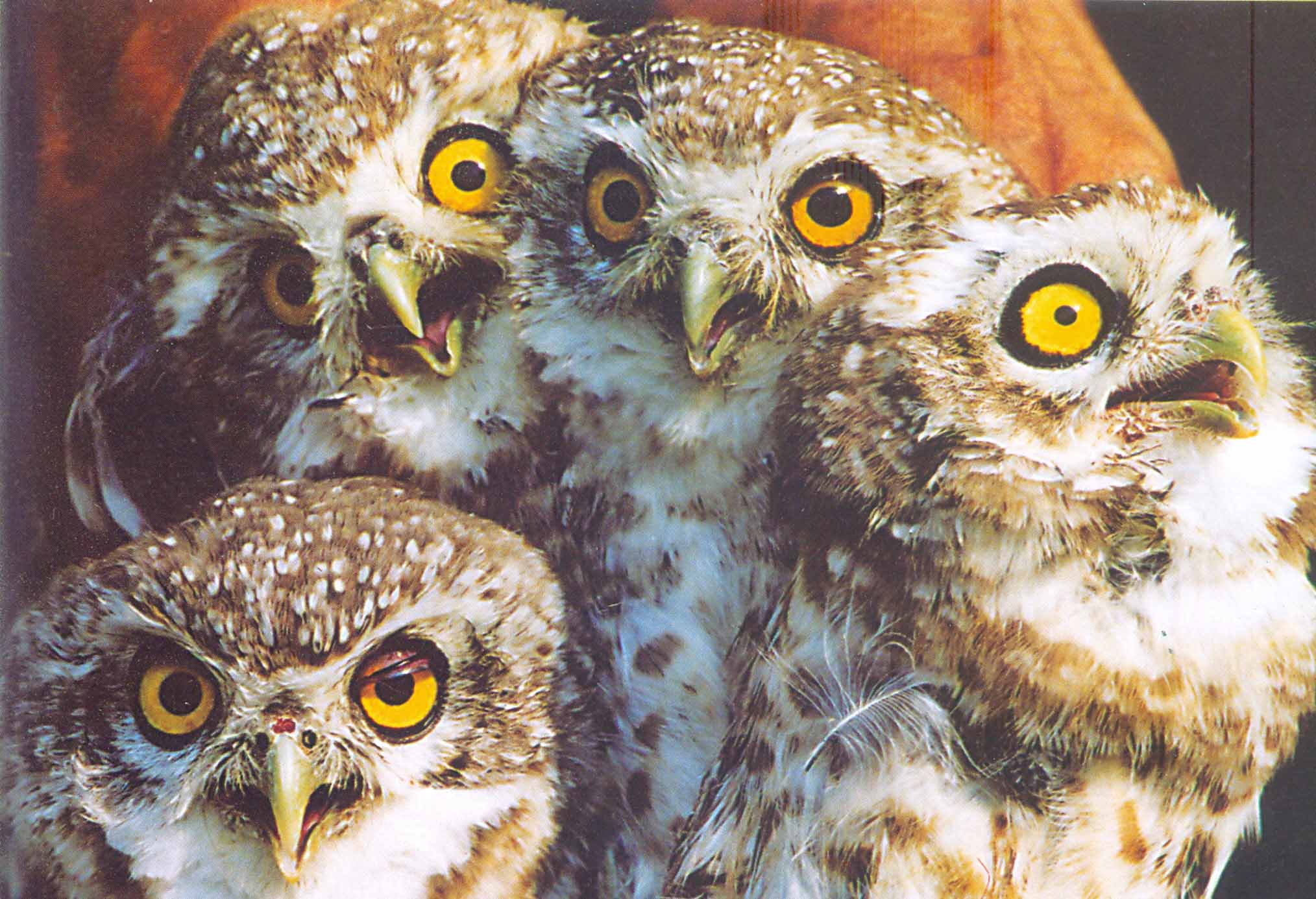The vast pantheon of Hindu gods and goddesses are said to have many astonishing powers. But quite like us mere mortals, they too need a little help getting around – just that the vehicles or mounts, known as “vahana,” that zip them around at supersonic speed are birds, animals or mythical creatures capable of way more than interstellar travel.
The owl is considered one such vahana.
Videos by VICE
The bird, considered wise in the West and stupid in the East, finds itself in Hindu mythology as Goddess Laxmi’s vahana. The goddess of wealth, prosperity and good fortune takes prime importance during Diwali, the Festival of Lights celebrated by Hindus worldwide and which usually falls in October or November. In India, it’s a huge national holiday. Laxmi is said to walk the earth on the night of Diwali, entering houses lit with lamps – but only if they’re spotlessly clean, so some of us are clearly goners.

“Some people think killing her vahana, the owl, will force Laxmi to stay in their house because she won’t have a means to return,” Dipak Kumar Singh, the principal secretary of the Environment, Forest, and Climate Change department (DEFCC) of the eastern Indian state of Bihar, told VICE. The idea, then, is that with Laxmi trapped in the house, the ill-fortune or malaise would be warded off. “It’s crude and cruel logic, but it’s led to thousands of owls being sacrificed.”
Every year around Diwali, the nocturnal birds of prey are hunted down by poachers and black magic practitioners – or “tantriks” – for use in occult practices. “Driven by religious myths and superstitious beliefs tied to them, owls are poached for their body parts such as talons, skulls, bones, feathers, meat and blood, which are then used in talismans, black magic, traditional medicines, etc,” said Kartick Satyanarayan, co-founder and CEO of Wildlife SOS, a nonprofit organisation that rescues and rehabilitates wildlife in distress. “The domestic trade of owls is highly lucrative, and it is appalling that the festival of Diwali is used as a front by wildlife traffickers to peddle endangered birds for monetary gain.”

Owls are protected under the Wildlife Act of India, making the hunting, trade and utilisation of the animals or their body parts illegal. The international trade of owls is also restricted under the Convention on International Trade in Endangered Species of Wild Fauna and Flora (CITES). Trapping and poaching of owls or the possession and illegal trade of their body parts is a criminal offence that can lead to imprisonment of three to seven years.
There is no clear data on how many unfortunate owls get trapped in this trade, thanks to a highly underground and secretive system of trafficking and an illegal home-delivery model that helps keep it under wraps. Experts we spoke to say that the numbers should be in the thousands every year, and that the superstition is largely prevalent in north and central India, where live owls are sold for anything between thousands to millions of rupees.
“Owls, especially with ‘ears’ [or tufts] are thought to possess the greatest magical powers, with Diwali claimed to be the most auspicious time for owl sacrifices,” a 2018 advisory by TRAFFIC, a wildlife trade monitoring network, said. “The spotted owlet is amongst the most traded owl species in the country. Reports have indicated that an increased demand for spotted owlets throughout the Delhi market has resulted in the extensive trapping of birds from nearby areas, particularly Meerut and Lucknow.”

Horned owls such as the rock eagle-owl are sought after, too, with their false feather ear tufts considered to hold mystical properties. “There are unorganised black markets and bird markets where people buy and sell these owls, as well as a covert network of middlemen and smugglers who are part of an organised wildlife crime syndicate that operate in smaller cities [or] villages,” Satyanarayan said.
An earlier comprehensive ground report by TRAFFIC on owl trafficking detailed how each part of the owl is used in occult practices – the head to destroy enemies and to get the power to read in the dark; the eyes to know about past lives or the future; the tongue to become invisible or to induce a divorce; the bones to find hidden wealth, and so on. “The heart of an owl is grounded or mixed with gorochan (a product from a cow’s bile duct) in equal parts to form a paste. This paste is blessed seven times with a prescribed mantra (chant), then used as an eyeliner, and the person targeted becomes hypnotised,” the report said, describing the various methods used to trap the bird and suggestions on how to control the trade.
“We’ve heard of an increased demand for owls as pets after the success of Harry Potter,” said Saket Badola, head of TRAFFIC India. “But that’s not really in India. Even though we do not know exact numbers, we know that the trade has increased in the last few years because people have more disposable incomes. We’ve also heard of owls being trafficked from Nepal into India.”
Some busts make it to the news every now and then. In 2019, five owls crammed in a plastic bucket and supposedly to be sold for 1 crore Indian rupees ($134,119) were intercepted in Ghaziabad. In 2018, a postmortem report of a barn owl killed by a man who wanted to make a woman fall in love with him, said that “the accused had allegedly cut the claws of the owl with a knife and inserted several needles into its liver and lungs, suggesting that he used the owl as a voodoo.”
The trafficking doesn’t just happen during Diwali. In 2018, poachers trafficking two rock eagle-owls alleged that a politician had “ordered” the birds to bring misfortune to his rivals.
“Last year, Wildlife SOS, in collaboration with the forest department, rescued eight Indian eagle-owls,” Satyanarayan said. “After an undercover informant caught whispers of a religious ritual where a large number of owls were supposed to be sacrificed to a local deity, the team intercepted the smugglers by posing as potential buyers. Accompanied by undercover officials, they were able to nab the perpetrators.”

The forest departments and police in states where owls are usually trafficked are currently on high alert as people gear up for Diwali celebrations. Dipak Kumar Singh of the DEFCC told VICE that forest officials in Bihar have been instructed to stay vigilant, and that citizens can report suspicious activities by emailing their office. TRAFFIC, too, is working with local law enforcement agencies to keep an eye on the trade, and educate them on the various owl species that exist and the punitive action linked to the industry. Meanwhile, Wildlife SOS said they have informants tracking potential links to the owl trade. Other states where wildlife poachers are active have been told to stay vigilant, too.

However, not everyone is hopeful that this will lead to tangible changes.
“In India, there is no real monitoring or action taken to curb such trafficking,” said animal rights activist Abhinav Srihan, who runs a nonprofit called Fauna Police. “In the last month itself, I have uploaded around 350 videos of animals being poached in broad daylight, including leopards, pangolins and owls. But no one has even called me to gather the evidence and put an end to this.”
Follow Dhvani on Instagram.
More
From VICE
-

(Photo by John Lamb / Getty Images) -

Screenshot: Electronic Arts -

Photo by VCG/VCG via Getty Images -

(Photo by Dana Neely / Getty Images)

